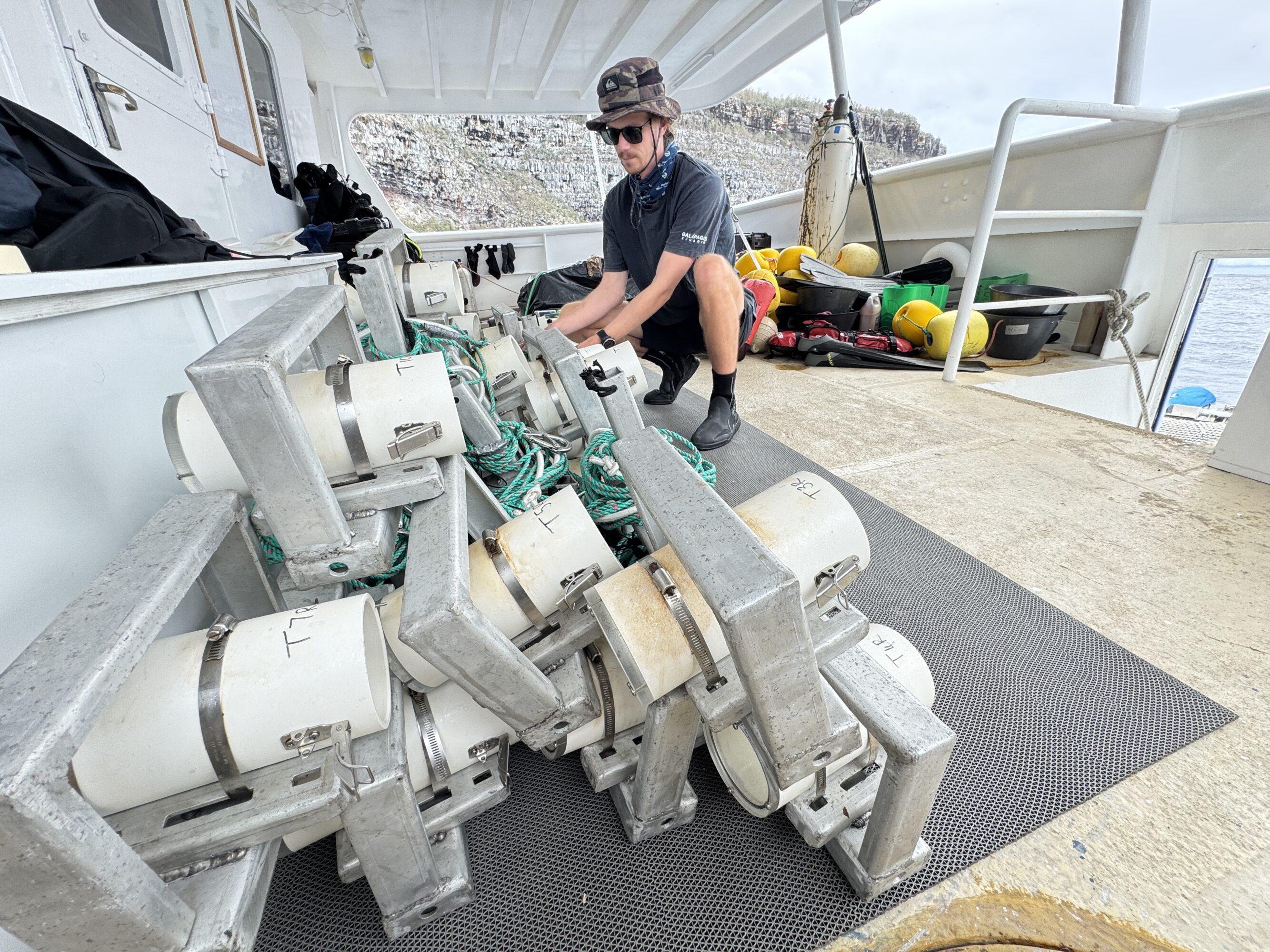From computer screens to up close and personal: Getting to know fishy characters of the Galapagos Islands
My story as a marine ecologist began in Curtin University’s Marine Ecology Laboratory in Perth, Western Australia. As an undergraduate student, I volunteered to analyse video footage of fish recorded on reefs in the Galapagos Islands in 2015 and 2016 as part of the archipelago-wide Baited Remote Underwater Video (BRUV) surveys by the Sharks in the Birthplace of Evolution project funded by SOSF. I identified and counted tens of thousands of fish, but what really drew me in were their individual characteristics. Each species had quirks: a flick of a fin, a dart across the frame, a curious turn that gave away its identity before it even came into view. A few years later, after lots of hard work, I finally snorkelled and scuba dived in the same Galapagos waters I’d once studied on a screen. It felt like meeting old friends for the first time.

Reviewing video survey footage of reef fish at Darwin and Wolf Islands. Photo © Pelayo Salinas
Since April 2024, I’ve been part of the Shark Ecology and Conservation Project team at the Charles Darwin Foundation for the Galapagos Islands. My work focuses on some of the ocean’s most fascinating and misunderstood fish: sharks. I fulfilled my dream of doing shark research at Darwin and Wolf Islands, one of the sharkiest places in the world, as highlighted by our recently published study of Marine Protected Areas across the Tropical Eastern Pacific . There I swam alongside the territorial Galapagos shark, the confident blacktip shark patrolling the reefs, and the shy, iconic scalloped hammerhead shark cruising by in vast shivers, creatures I’d once only observed on a computer screen.
My video survey work soon moved offshore of the islands, putting video camera systems to drift 10-meters below the surface but above deep waters to record oceanic shark species rarely seen in shallow water footage. That’s where silky sharks stole the show. Sleek and true to their name, I can confirm their skin really does feel like silk after helping attach satellite tags to track their movements as part of the SOSF project, Protecting the Sharkiest Place on Earth.

Preparing video camera systems to survey oceanic sharks. Photo © Pelayo Salinas
Now, through satellite tagging, I’m seeing the ocean from an entirely new perspective. Each tagged shark tells a story. Some stay close to the Galapagos Islands, while others travel thousands of kilometres, like Silky Shark Genie who holds the world record for the longest tracked journey of the species. Sadly, some tracks stop suspiciously, or the tags transmit from fishing ports, with the shark’s life likely cut short by fishing.

It's always a happy sight when shivers of scalloped hammerheads swim across your screen in video survey footage. Photo © Charles Darwin Foundation
While my focus has shifted slightly from identifying and counting fish species in video footage to tracking shark movements, the video surveys I analysed remain a cornerstone of my work. Watching countless hours of footage taught me to observe, interpret, and connect with marine life, skills that still shape how I see and experience the ocean today. Video survey work was my foundation, and it will always be the lens that first truly opened my eyes to the fascinating lives of fish beneath the ocean surface.
